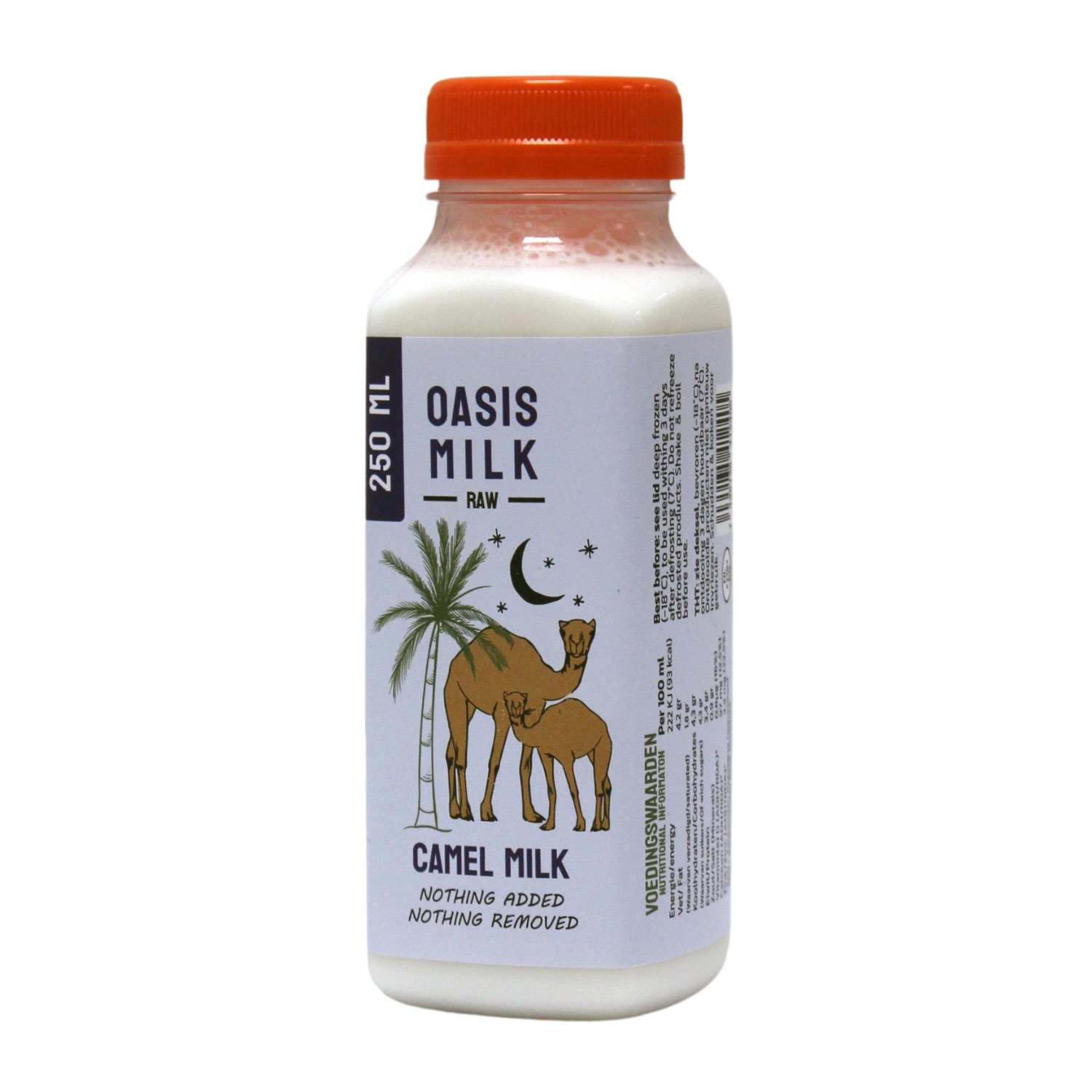Shelf Life and Storage of Camel Milk
Fresh Camel Milk:
Our fresh camel milk is a pure, unprocessed product with a shelf life of 3 days in the refrigerator. This is because the milk is unpasteurized, preserving all its beneficial properties. Want to store it for longer? No problem! Camel milk can be frozen and will stay good for up to 1 year in the freezer.
Tips for Thawing:
When thawing camel milk, we recommend doing so slowly in the refrigerator. For the best quality, the milk should not be refrozen after thawing.
Convenience of Frozen Camel Milk:
For added convenience, we also offer ready-to-use frozen camel milk. Perfect for those who want to stock up right away! Thanks to the practical, square bottles, they’re easy to stack in both the fridge and freezer.
Discover the Taste of Fresh Camel Milk
Camel milk has a taste similar to raw cow’s milk but is slightly less creamy due to its lower fat content. Some people notice a subtle salty flavor, which comes from its high mineral content. This unique taste makes camel milk a popular alternative to cow’s milk.
Safety and Quality Guaranteed
We place great importance on quality and safety. Our camel milk is chilled immediately after milking and carefully packaged. Additionally, the milk is regularly tested for quality and safety, including checks for antibiotics, bacteria, and other substances.
What You Won’t Find in Our Milk:
- No antibiotics
- No hormones or medications
- No harmful pathogens like brucellosis, tuberculosis, salmonella, listeria, campylobacter, or STEC
With strict controls from the Central Dairy Organization (COKZ), we guarantee that our milk is always safe to drink and of the highest quality.
A Healthy Alternative to Cow’s Milk
Camel milk is an excellent choice for people who cannot tolerate cow’s milk. It contains:
- No cow milk proteins, making it suitable for those with a cow’s milk allergy.
- Essential nutrients like calcium, zinc, and proteins.
- Substances like lactoferrin and immunoglobulins that support a stronger immune system.
It also lacks beta-lactoglobulin, a protein often responsible for cow milk allergies. According to the FAO, camel milk is considered one of the healthiest types of animal milk.
How to Use Camel Milk
There are endless ways to enjoy camel milk:
- Drink a glass as a nutritious snack.
- Add it to your favorite smoothie for a healthy boost.
- Use it as a substitute for cow’s milk in recipes and baked goods.
- Make delicious hot chocolate with our ChoCamel chocolate milk pops, specially made from camel milk.
Animal-Friendly Production
We take excellent care of our camels. They live in herds with access to spacious pastures where they can graze freely. In the stables, they rest on thick straw bedding. Calves stay with their mothers for an extended period after birth, and after each milking session, the calf is reunited with the mother. This ensures the well-being of both mother and calf.
Nutritional Value of Camel Milk (per 100 ml):
- Protein: 3.4%
- Fat: 4.2% (1.8% unsaturated fatty acids)
- Lactose: 4.3%
- Minerals: 0.9%
- Energy: 53 kcal (222 kJ)
Minerals and Vitamins in Camel Milk
| Minerals |
Vitamins |
| Sodium (Na): 36 mg% |
Vitamin C: 3.6 mg |
| Calcium (Ca): 97 mg% |
Vitamin A: 129.1 IU |
| Zinc (Zn): 3.4 mg% |
Vitamin D: 0.8 IU |
| Magnesium (Mg): 16 mg% |
Vitamin E: 0.027 mg |
Camel milk is not only delicious but also rich in essential nutrients that contribute to a healthy lifestyle.



